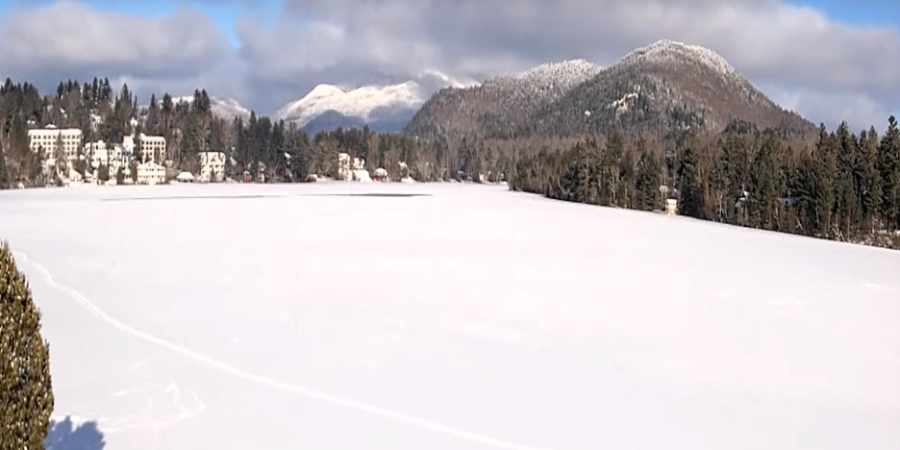If it feels as though the ice-in date on Mirror lake has grown later over the years, that is because it has. There has been a significant change in the freeze up period over the past century. Mirror Lake has one of the longest ice records in New York State. Residents in the Village of Lake Placid have been recording the ice cover since 1903, with only a handful of years missing since that time. This record has appeared in national publications regarding changes in ice cover. Since 2015, AsRA has taken up the maintenance of this record as part of our ongoing work to study and understand Mirror Lake.
Today, ice-on occurs on average 17.8 days later than it did in 1903. The average date for ice-on for the entire record is December 4th, however the average date for ice-on since 2000 is December 13th. This year, after some false starts due to freeze thaw cycles and significant rain in Mid-December, we considered December 22nd to be the day when Mirror Lake was locked up with ice from shore to shore. This date stands in a tie with 1996 for the third latest ice-in date on record.
This trend toward later ice on dates has led to a significant reduction in the duration of ice cover over the period of record. In recent years, the duration of ice cover is on average 22 days shorter than it was in 1903. The shorter duration of ice cover is driven primarily by later ice-on, as there has not been a significant trend towards earlier ice-out dates. The mean duration of ice cover over the entire record is 139 days, however the mean duration since 2000 is just 124 days. The shortest duration of ice cover occurred in 2016, with just 84 days of ice cover. Despite regularly exceeding 150 days or greater of ice cover during the first half of the data record, 1995 remains the only year that has exceeded 150 days of ice cover on Mirror Lake since 1977.
Research has shown that warming water temperatures and prolonged stratification are a threat to Lake Trout across their native range. The changes observed in the Mirror Lake ice record reflect similar changes observed across North America. These changes represent a potential change in the habitat suitability for cold water fish, such as Lake Trout. These changes, along with the interruption of spring turnover due to road salt, are one of several reasons why understanding the ecology of these vitally important lakes is necessary.
Story by Phil Snyder, Water Quality Research Manager.
Sign-up for our e-newsletter to get weekly updates on the latest stories from the Ausable River Association.

